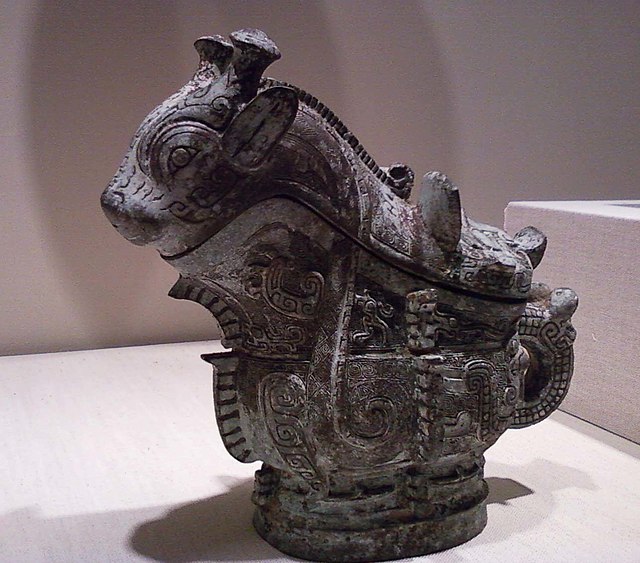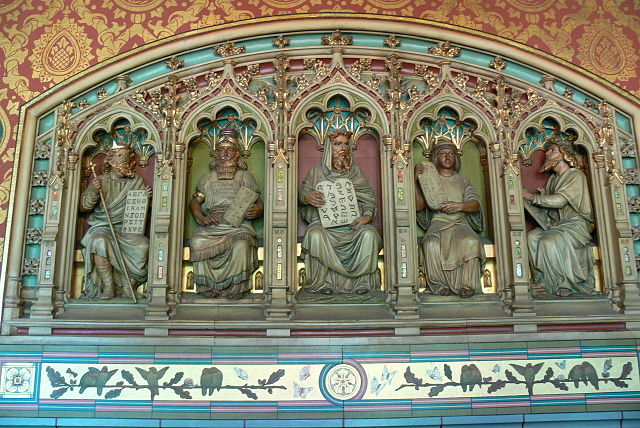Antiquities are objects from antiquity, especially the civilizations of the Mediterranean: the Classical antiquity of Greece and Rome, Ancient Persia (Iran), Ancient Egypt and the other Ancient Near Eastern cultures. Artifacts from earlier periods such as the Mesolithic, and other civilizations from Asia and elsewhere may also be covered by the term. The phenomenon of giving a high value to ancient artifacts is found in other cultures, notably China, where Chinese ritual bronzes, three to two thousand years old, have been avidly collected and imitated for centuries, and the Pre-Columbian cultures of Mesoamerica, where in particular the artifacts of the earliest Olmec civilization are found reburied in significant sites of later cultures up to the Spanish Conquest.
A centaur struggling with a Lapith on a metope from the Parthenon, in the British Museum (London), part of the Elgin Marbles
An Assyrian lamassu in the Louvre
Chinese ritual wine server (guang), circa 1100 BC
Allegories of five literatures of antiquity, relief at Cardiff Castle, by Thomas Nicholls circa 1870
The Olmecs were the earliest known major Mesoamerican civilization. Following a progressive development in Soconusco, they occupied the tropical lowlands of the modern-day Mexican states of Veracruz and Tabasco. It has been speculated that the Olmecs derived in part from the neighboring Mokaya or Mixe–Zoque cultures.
Olmec Head No. 3 from San Lorenzo-Tenochtitlán; 1200–900 BCE; basalt; height: 1.8 m, length: 1.28 m, width: 0.83 m; Xalapa Museum of Anthropology (Xalapa, Mexico)
El Señor de las Limas; 1000–600 BCE; greenstone; height: 55 cm; Xalapa Museum of Anthropology
The Wrestler; 1200–400 BCE; basalt; height: 66 cm, from the Arroyo Sonso area (Veracruz, Mexico); Museo Nacional de Antropología. Olmec artists are known for both monumental and miniature portrayals of what are assumed to be persons of authority-from six-ton heads sculptures to figurines.
Great pyramid in La Venta, Tabasco








